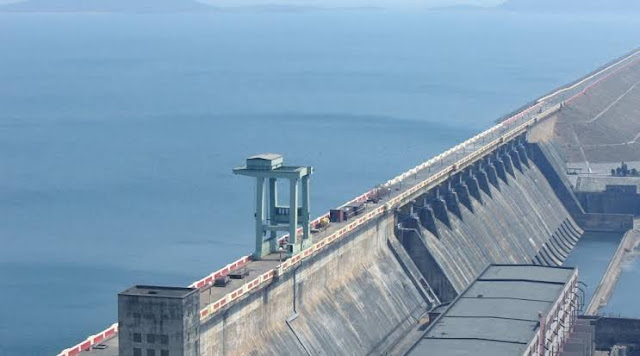HERITAGE OF INDIA
India is a land of rich heritage of art, architecture, philosophy, classical music and dance and much more. Heritage of India is something that sets India apart from the rest of the world.
The cultural heritage of India, originates from various elements of culture, namely dance, music, sculptures, languages, festivities, traditional customs and beliefs and so on. It is these aspects and their significance that make Indian heritage the most vibrant of all.
DANCE AND MUSIC
The dance forms of India include both folk dance and classical dance.
Our folk dance bring great joy to every occasion. Folk dances are performed on special occasions, such as festivals, marriages, harvesting time, etc. some of the popular folk dances are Bhangra of Punjab, Ghoomar of Rajasthan, the tribal dances of the Nagas, Mizos and Finds, etc.
Indian classical dances started as a form of worship. Kathak, Bharatnatyam, Manipuri, Odissi and Kuchipudi are some of the popular classical dance forms of India . Different classical dances have different beats, rhythms and costumes.
India has a rich heritage that believes in touching the soul. Indian classical music is of two types- Hindustani music and Carnatic music. Hindustani music was developed in North India. Hindustan music was not only influenced by ancient Hindu musical traditions, but also by the Persian people of the Mughal era. Besides pure classical, there are also several semi classical forms such as Thumri and Tappa.
Carnatic music was developed in South India. Carnatic in Sanskrit means 'soothing to the ears'. The main emphasis is on vocal music, and the composition is meant to be performed in a singing style known as gayaki.
Different musical instruments are used in classical music. Veena, sitar, shehnai, flute, harmonium and tabla are some of the popular musical instruments used in classical music.
FOOD
Spices are the very essence of Indian cuisine ans these colourful ingredients and what bind the rich Indian culinary tradition. There is a great variety of food items in India. Each part of the country has a cuisine or a delicacy exclusive to that region. North Indian people prefer roti, paranthas and a vegetable dish with pickles. In south India people prefer idlis and dosas with different chutneys. In Eastern India rice and fish are the preferable food items, while in western India dhokla, thepla, khandavi etc are the main food items.
PAINTING
Paintings constitute an important part of our culture. Early humans painted on the walls of the caves as in Bhimbetka in Madhya Pradesh. The Ajanta paintings in the Maharashtra depict the life of Buddha. Paintings from the Mughal Era were beautiful and usually depicted a story. Mughal rulers used to invite painters to decorate their palaces and temples. Some of the popular painting forms include the Tanjore painting of Tamil Nadu, Madhubani painting of Bihar, Kalamkari painting of Andhara Pradesh and Telangana Pithora and painting of Gujarat.
ARCHITECTURE
India is blessed with a rich cultural legacy of art and architecture. The numerous beautiful temples and other monuments bear testimony to the rich Indian culture heritage. The Ajanta and Ellora caves in Maharashtra, the Khajuraho temples in Madhya Pradesh, the Konark temple in Puri, the stupas of the Sanchi and shore temple at Mahabalipuram in Tamil Nadu and the Taj Mahal in Agra are some of the beautiful monuments that reflect the rich architectural heritage of India.
FESTIVALS
The thing that is most striking about India is its vibrancy and colours. The country is a land of myriad fairs and festivals which have been categorized into 3 types of festivals:
- National festival
- Religious festival
- Seasonal festival
National Festival
In India, there are three national festivals - Independence day, Republic day and Gandhi Jayanti.
Religious Festival
Many religious festivals are celebrated in India such as Diwali, Dussehra, Christmas, id-ul-fitr, Gurpurab, Buddha Purnima, Mahavira Jayanti and many others.
Seasonal Festivals
Some seasonal festivals are celebrated in particular seasons such as Baisakhi in Punjab, Pongal in Tamil Nadu, Bihu in Assam and Onam in Kerala which are harvest festivals.
Languages
In India, people speak many languages. There are twenty major languages in India which are recognized by our constitution. These are Assamese, Bengali, Gujarati, Hindi, Kannada, Kashmiri, Malayalam, Manipuri, Marathi, Nepali, Oriya, Punjabi, Sanskrit, Sindhi, Tamil, Telugu, Urdu, Santhali, Maithali, Konkani, Dogri and Bodo. Hindi is our official language and is also spoken by the majority of Indians. Most of the languages spoken in India in one way or the other belong to two main families of languages, Dravidian and Aryan.
India is a vast country and is centuries old. It is difficult to sum up our heritage in a few words. Her glorious past has many great art forms, architecture, literature, cultures and traditions adorning her. The most prominent feature of India's culture is that it combines many cultures. We should preserve this precious gift of our ancestors and live up to the glory of our rich heritage.








































